Yves here. Coming from a family that on one side was fishermen and sea cooks, reading about harm to ocean-dependent lifestyles, even if mainly of the tourist classes, is sad. Many traditional communities now depend on making hay during a comparatively short high season to last the year. And shoreline loss that eats away at big cities? Can and will they invest in infrastructure to protect them?
By Thomas Neuburger. Originally published at God’s Spies
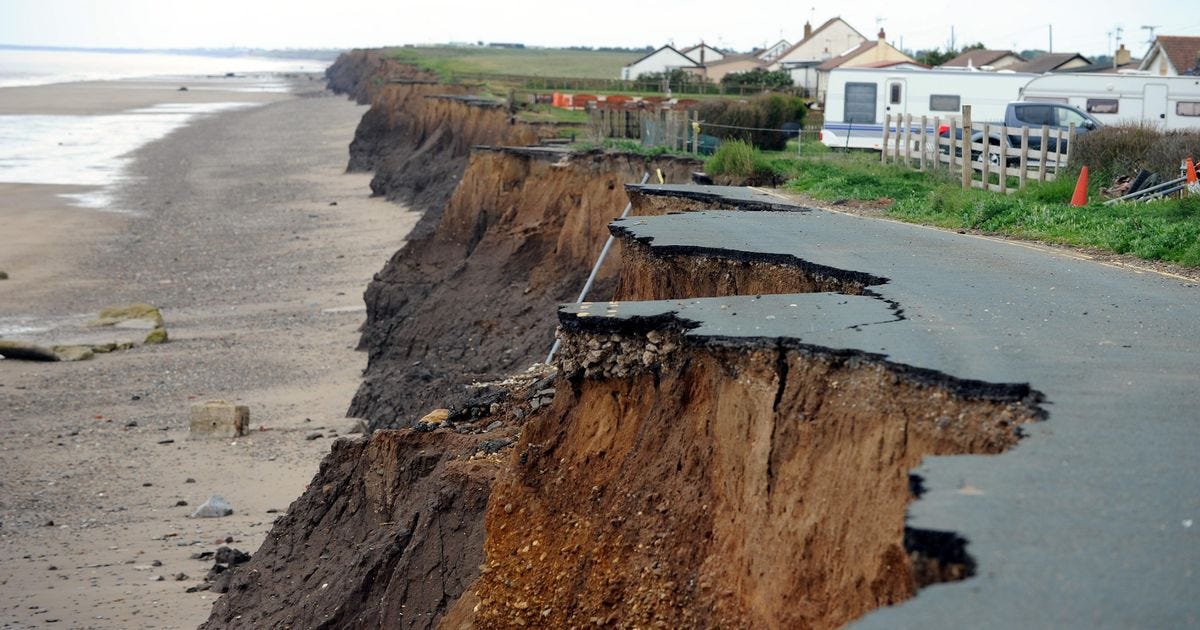
We have to adapt to a shoreline that is shifting inland for the first time in human civilization.
—John Englander, hereHalf the world’s citizens live on sea coasts. That’s where the commerce action is. So they’re going to have to move. Where they going to go? And who’s going to pay for it?
—Bill Nye, hereNo one will pay for it. The rich aren’t rich enough yet.
—Yours truly
I recently wrote a deep dive into James Hansen’s working paper on “Global warming in the pipeline”. That piece is here:
Today I’d like to address a few of the common misconceptions about sea level rise and how dangerous it is. More specifically, I want to answer this question…
My house is on the shore, but a full three feet above sea level. If the sea only rises a foot, I’m safe, right?
…with brief reasons why the answer is “No, you’re not safe at all.
• When sea level rises, the land behind it erodes
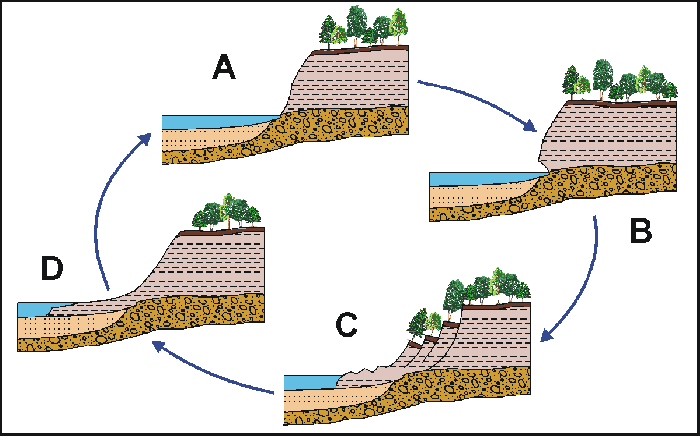
The cycle of land erosion (source)
Notice in the image above that the sea doesn’t have to rise much for quite a bit of land behind it, the land it newly touches, to erode and collapse. As John Englander points out in this TED Talk (3:36):
It makes sense that every time sea level goes higher, the shoreline is going to move inland. But the ratio is surprising. For each foot of rise, the average global shoreline moves inland about 300 feet — the length of a football field.
Keep that ratio in mind. To answer our original question, one foot of sea level rise moves the shoreline inland by something like 300 feet, or more if you live in a low coastal zone like most of Florida.
• When sea level rises, fresh water becomes salty
When salt water from the ocean rises, it forces fresh water in the ground — the water table — to rise as well. This impacts drinking water in a number of ways.
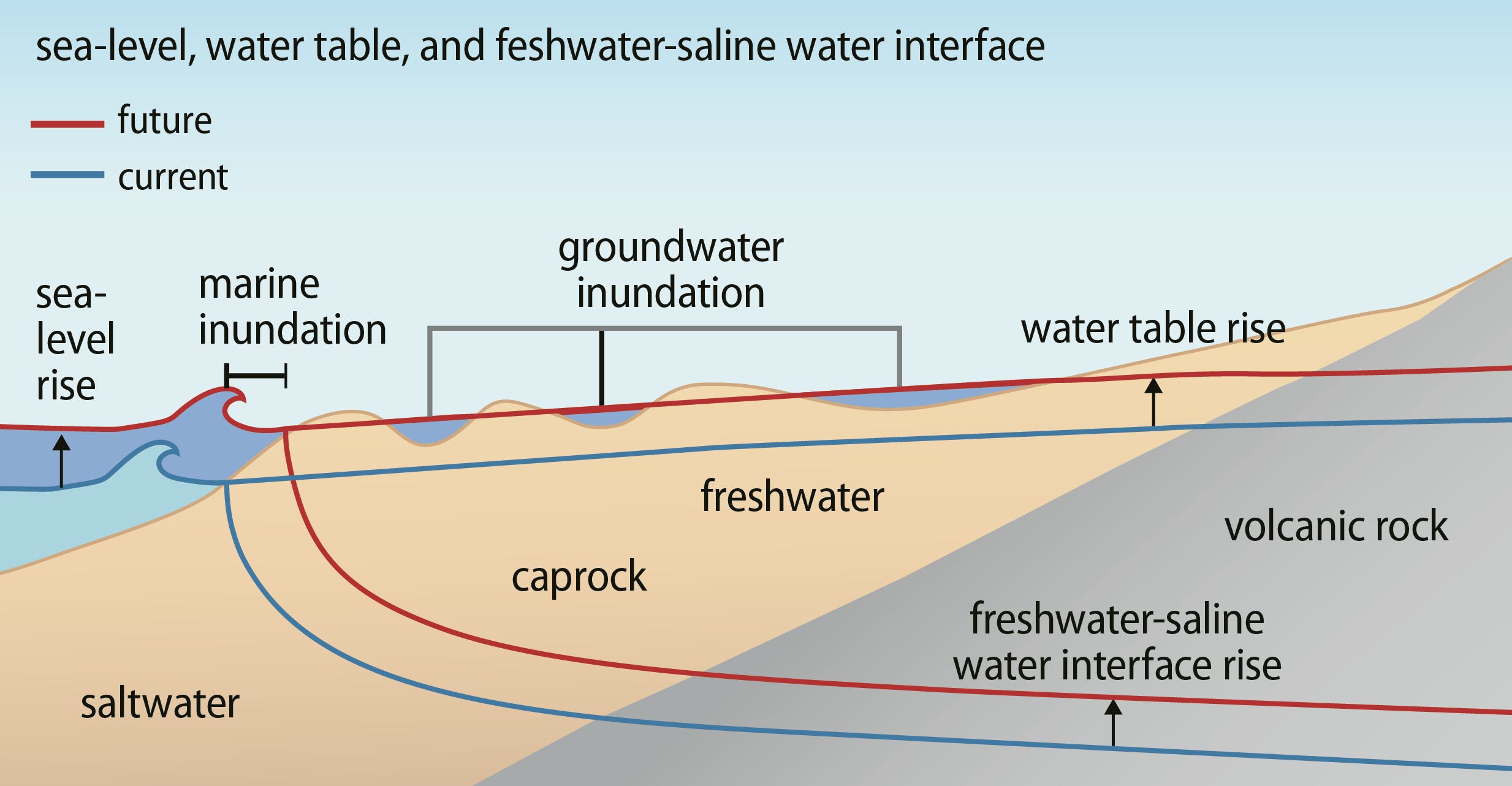
This shows the effect on wells:
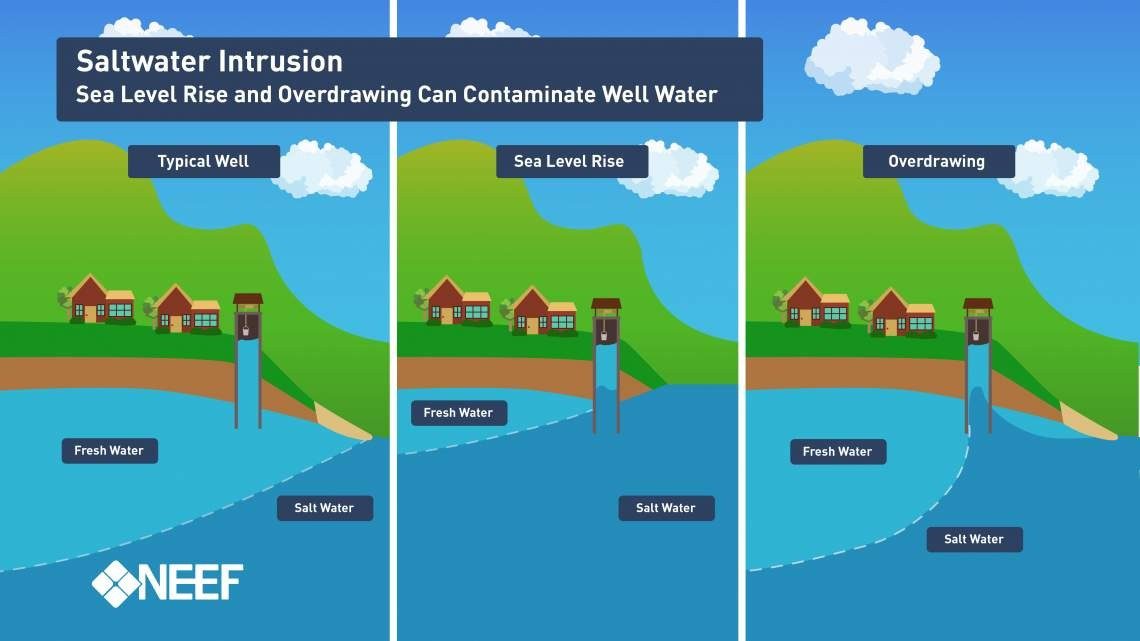
Florida is already constantly fighting the intrusion of salt water into its water system.
Imagine Florida’s future, even if escapes a monster Haiyan-like storm. More on Miami’s fresh water problems here and here.
• When sea level rises, high tide is higher and storm surges overcome defenses
A higher sea level means higher storm surges, which means dikes that used to be effective are overrun.
• High tide can cause salt water to flood streets through water drains
Yes, you read that right. Salt water. As John Englander says in the TED Talkquoted above (emphasis added):
The other phenomenon we’re starting to see is flooding streets on a regular basis, every 28 days, along with the lunar tide cycle. Flooding streets without rain, without storms. And in some neighborhoods, they’re actually storm drains installed that were designed to take excess rainfall and move it over to the nearest waterway. Those storm drains now work in reverse.
Every month, and some months worse than others depending upon the alignment of the planets, the salt water is backing up through the storm drain. It’s happening from Key West and in Broward County and up toward Palm Beach County and out in Seattle — all over the world [in] low-lying coastal areas.
That didn’t happen a few decades ago, when those streets were designed[.]
• Some major cities are sinking, exaggerating already dangerous sea level rise
From a report by the World Economic Forum:
Relative sea-level rise will be even higher in the many cities that are sinking because of factors that include groundwater extraction and the growing weight of urban sprawl. Some cites are sinking faster than sea levels are rising: in parts of Jakarta, for example, ground level has sunk by 2.5 metres in the past decade.[13] In addition, sea-level rise amplifies the impact of storm surges, as it takes a smaller surge to produce the same extreme water level.
Jakarta is one of the world’s most populated places — 10 million people in the city proper alone.
When Will We Start?
So no, we’re not safe during “modest” sea level rise. A rising sea level shouldn’t be counted in vertical inches and feet, but in horizontal feet, yards and miles, measured from the previous shoreline to where our towns and cities will be safe for the next 100 years or so.
How long will it take to effectively move New York City? Mumbai? Jakarta? Shanghai? San Diego? Forever, if the planning never starts.
Videos
John Englander’s entire TED Talk is below. Note, however, his optimism, saying none of this will happen this century. Others disagree.
And Bill Nye’s contribution to this subject is here:
Another good video on sea level rise:

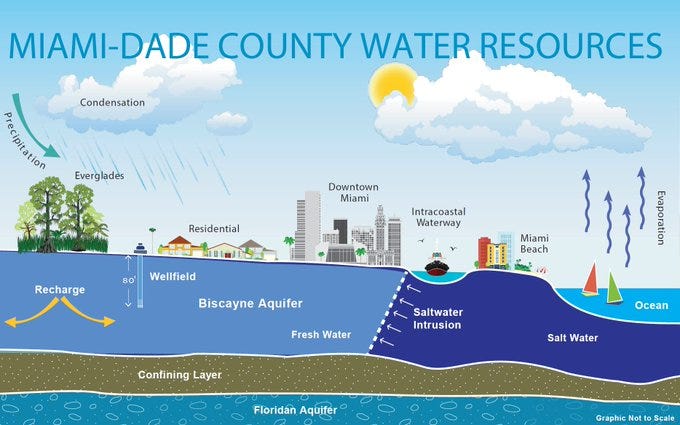
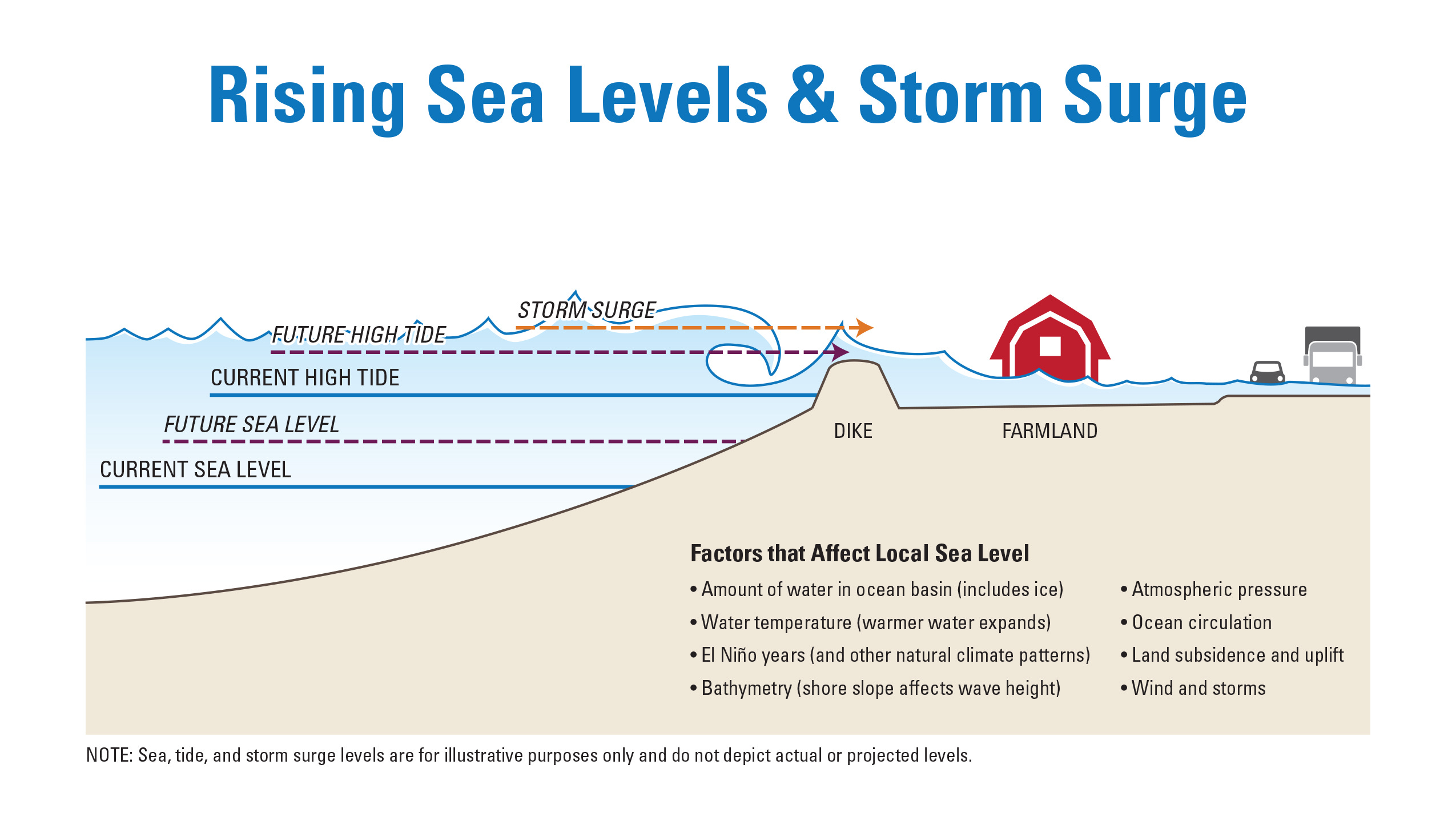


I know how the damage in a single place can be even more catastrophic and rapid: Playa del Carmen, México.
In a single month in 2017 there were two hurricanes that changed the contours of the sea bed so that now at high tide the waves lap the foundations of buildings that had been hundreds of feet from high tide.
No, no one is talking about moving those buildings further back. The real estate is too valuable and there is a city of 300,000 people radiating out behind them, so no where to go.
Those are great illustrations. Very helpful.
With rising sea levels, this is going to create chaos with commercial ports. Whole segments of port infrastructure will have to be abandoned or somehow built up to take account of the rising tides. The US Navy has already worked out that they will be losing some of their most important naval bases due to these rising tides. It may be that fixed ports will have to be replaced with floating ports and terminals so that they will not be that much effected-
https://nationalports.com/
Maybe, but at least out here the ROD for Pearl Harbor Shipyard infrastructure project approved construction of a new dry dock per alternative 4 of the FEIS so doesn’t seem to be a factor.
seabees where are you?
Two tropes come to mind.
The inability to prioritize means nothing is a priority.
The Hamptons are not a defensible position.
Flooding where the ocean backs up through storm drains they call nuisance or sunny day flooding. In Charleston SC it has increased in frequency from 15ish times a year to 100ish.
I have friends/coworkers that live on the eastern shore in Maryland. They bowhunt, and the desired location for treestands is the interface between the salt marsh and pine forest.
The tiny rise in the Chesapeake bay we are already witnessing is enough that they have to move there stands inland by about 25 feet each year as saltwater intrusion is killing the trees.
If you go out there, you can see the pines that are dying, the dead ones that are still standing, and then beyond that the ones that have fallen and have been consumed by the marsh. What was previously marsh is now open water.
It’s a long slow grind towards the jackpot.
so if we are just going to let this happen, where will the new seaports be? If all the ice melts that’s 212 feet deep, so that goes inland at a rate of 300 feet per foot… so 13 miles? Can’t really up and move NYC or any coastal city. and how much time have we got?
The new Hansen reports suggests total melt and thus the 60m is very likely :)
May all of our problems be so slow and solvable as sea level rise. As a lifelong inhabitant of coastal life methinks this is much ado about nature taking its course. The elephant in the room is the political bargaining power when we buy into the panic. Bill Nye continues to be a bombastic embarrassment for practicing engineers in my firm and likely scientists employed in creating solutions.
Please, sir, in what reality is it true that the challenge of sea level rise is “so slow and solvable”? With what resources? Do you seriously think the world economy is in any position to either build massive sea walls or relocate major cities? Perhaps if all the resources currently expended worldwide in furtherance of war were to be redirected to the problem, maybe, maybe, there would be a shot at a solution. Your life in coastal areas creates the risk of recency bias, which is particularly dangerous since we are set for conditions never encountered by homo sapiens since the retreat of the last glacial maximum. Also consider that events in the real world are outstripping the worst-case scenarios’ timelines, so thinking of sea level rise as something ‘slow’ only works if one’s time horizon is way too near. The sad truth is that we should have begun in the early ’70’s. “Oh well. So it goes.” ~ Kurt Vonnegut, Slaughterhouse 5.
More likely the activities of major cities will relocate, and most existing infrastructure – public and private – will be valuable only for salvage. The erasure of wealth and property will be staggering. The last time such a massive transformation occurred, it was in the context of a world with (seemingly) unlimited resources and very, very few humans. The species will enter this transformation with vast populations and ever-depleting resources. This will be one of the highlights of the Jackpot offering decades of high stakes action. Even a certain entertainment might be found in the comeuppance of the hubris that is can-kicking lubricated with magical thinking.
“Eric Anderson” is likely too busy posting other such nonsense on Twitter and Instagram to respond at this time. Ask “Eric Anderson” at a later time for his ChatGPT reply.
ChatGPT: what happens when the coast floods?
What you need is a hinged, heavy weighted flap on the outlet of the storm drain so that in the event of high sea level the the gate closes and stopes salt water ingress.
The rate is slow enough, that it will be a matter of willpower/money to developing damming and pumping solutions to these problems. Most won’t have the will or money, but some areas will.
In a village I lived in, Snettisham in Norfolk, the village is about 2 miles inland, and the land flat. The 1953 floods brought the sea into the village, about 1 to 2 miles inland.
The 1953 floods inundated the UK’ east coast from north of Norfolk to south of the Thames Estuary will become inundated . The inundation may flood parts of London, if the Thames Barrier is over topped.
Norfolk UK, and Probably Suffolk and Lincolnshire the County averages 8 ft above sea level. It appears to me that much of the UK’s east coast will become uninhabitable.
I suspect the Crown’s estate at Sandringham, a about 5 miles west of Snettisham, will also be inundated.
I’ve said this before and I’ll say it again. The affects of sea level rise are experienced much further inland than stated. You see, essential services (sewage treatment plants) are located on the coast. In my town, sea level rise will eliminate the treatment plant that serves homes in the distant hills far from the coast. A house without essential services is near worthless.
I’m in the process of finishing an interesting book along the same lines, The Great Displacement by Jake Bittle. Up close and personal stories throughout this book describes what happens to people as coastlines are destroyed in places like south FL, Louisiana, and other places. Disturbing is putting it mildly.